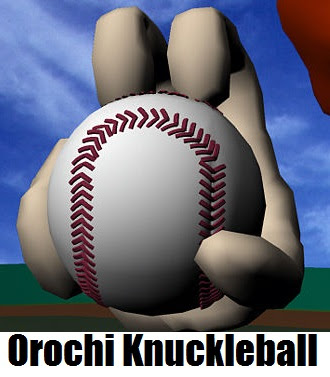Well spring has arrived in Japan and out of the winter cave the very unique baseball player has come out of his slumber. Here on Coaching a Switch Pitcher we have covered the trails and tribulations of switch pitching and switch hitting in Japan. Rafe Milo, nicknamed Orochi, has upped the ante in his original abilities with the addition of his version of a knuckler.
Rafe has been working on the pitch for years, but until this month the control had not been stable. The search for a breaking ball, like the use of two arms to pitch, was meant to avoid damage, as much of the conventional wisdom is not to learn most breaking balls before one has a reached an adult bodily maturity. Otherwise there is a higher chance in increased damage to youthful arms.
Read More source: Coaching a Switch Pitcher |
What are the rules on a pitchers glove? According to the official baseball rules, a pitchers glove can be up to 12 inches in size , of any weight , and any color except white or gray as long as it is not distracting. The Akadema ABX-00 glove, pictured above, is 12 inches, solid black and is not distracting according to local umpires. Little League Rules Gray glove is not allowed for pitching White glove is not allowed for pitching Little League Rule 1.14: Each fielder, other than the first baseman and the catcher may wear a glove not more than 12 inches long nor more than 7 3/4 inches wide, measured from the base of the thumb crotch to the outer edge of the glove. The glove may be of any weight. Little League Rule 1.15 (a) : The pitcher's glove may not, exclusive of the piping, be white or light gray, nor, in the judgment of an umpire, distracting in any manner. (source: Little League Baseball Rules Regarding Bats and Gloves ...

Comments
Post a Comment